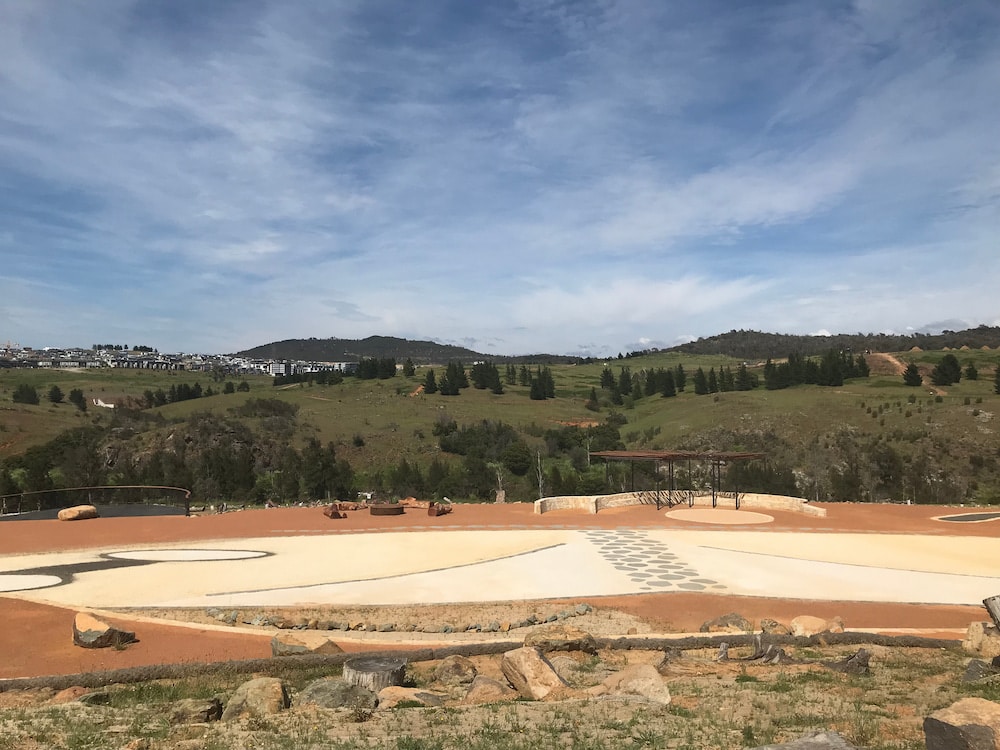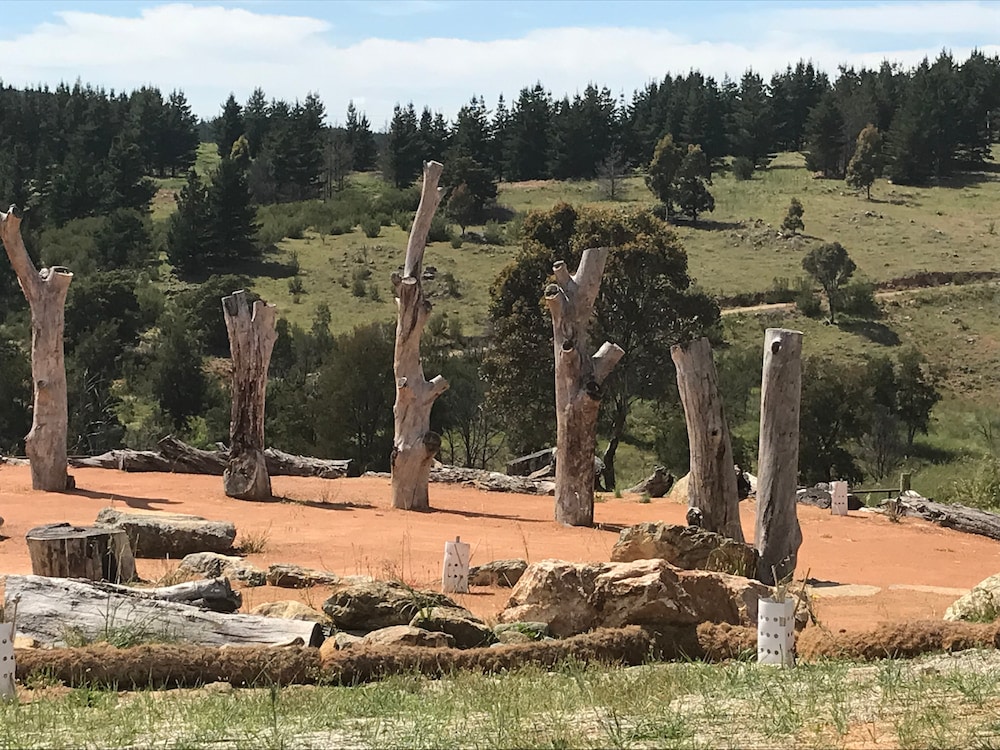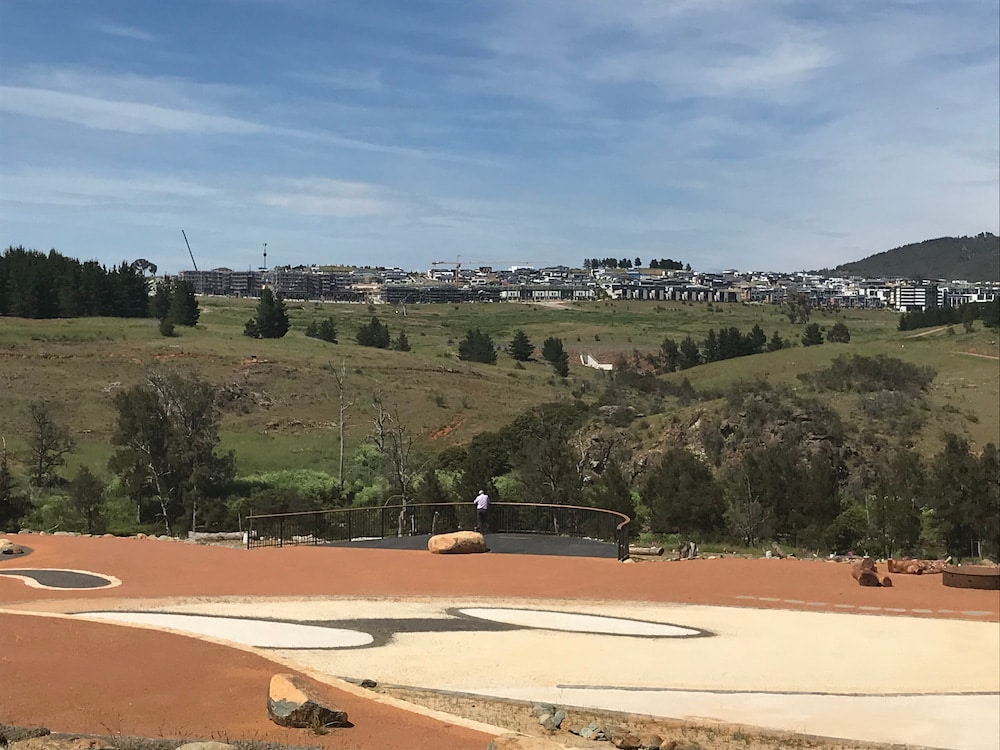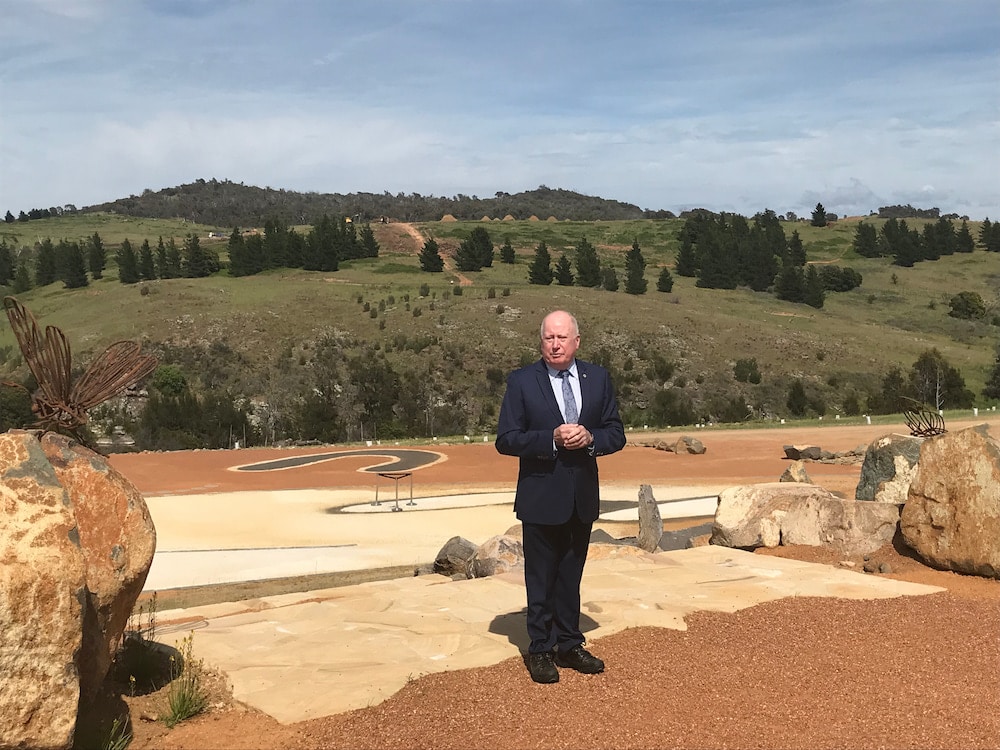Canberra’s newest nature reserve opened today: Namarag, in the Molonglo Valley. Once a special place for the Ngunnawal people, later turned into farmland and effluent ponds by Europeans, it has been restored to some of its former grandeur.
A red sand terrace offers spectacular views of the river corridor and surrounding hills dotted with pine trees. In the distance, the Molonglo town centre perches on a crest. The Valley is home to 10,000 people, and expected to grow to 40,000 habitants eventually. But here, all is tranquil: a green and brown landscape under a cloud-streaked blue summer sky. A kookaburra cackles.
The new reserve (whose name means “Wattle”) is described as a recreation space where Canberrans can walk, ride, and learn about Ngunnawal culture. It is also home to threatened species such as platypus and the pink-tailed worm lizard (a tiny snake-like reptile, only 14cm long).

For thousands of years, Ngunnawal people and other tribes came to the site to gather bogong moths, trade, marry, and hold ceremonies, explains Mary Mudford, a Ngunnawal woman and ACT Government expert in traditional custodian engagement.
A bush tucker garden shows how Ngunnawal people lived off the land; signs tell their cultural stories; and children can learn about bogong moths in the playground, or play in a giant wedge-tailed eagle’s nest.
The ACT Government worked with Ngunnawal people to design and construct the reserve. Namarag, Ms Mudford said, was the first real example of true engagement with the Ngunnawal community to develop such a site.
“The impacts of colonisation on our culture has been incredibly devastating,” she said.
“To be involved in a project that brings back our culture and our language, our people’s views and aspirations, their voice and their law … in this space is critical to moving forward.”

“It is a real restoration project,” said Mick Gentleman, ACT Minister for Land Management. “We want to make sure that we have great facilities for people to come and recreate. Not only do you have a fantastic walking area around here … but you are able to tell the Ngunnawal story into the future and that wonderful recognition of Ngunnawal culture, too.”
This area was once farmland – and, until 1978, sludge ponds. “Mothballed for some time”, Mr Gentleman said, they were capped in an extensive engineering program to make sure effluent did not leach out into waterways. The government has purchased more farmland for future suburban use.
For Mr Gentleman, Namarag brings back “fond memories of rallying along forestry roads in the old days”, circa 1972. (Rally drivers, he said, had “a unique name for the road, which I’m not going to say in front of the cameras today!”)
Construction began last September, to give the Molonglo Valley’s burgeoning population a wilderness precinct. Nature reserves are a selling point, Mr Gentleman explained; Canberrans are happy to live in dense areas so long as there is an open space nearby.

Greening Australia have planted more than 10,000 new trees and shrubs, and reused more than 2,000 tonnes of hardwood logs salvaged from felled trees. Altogether, the project – including remediation of the former farmland and sludge ponds – has cost the ACT Government $10 million.
“This site will grow into something absolutely stunning over the next decade,” promised Ian Walker, from the ACT Environment, Planning and Sustainable Development Directorate. “That transformation from a sewage farm to a nature and culture-based experience is an exemplar of how we can look after our threatened species.”



